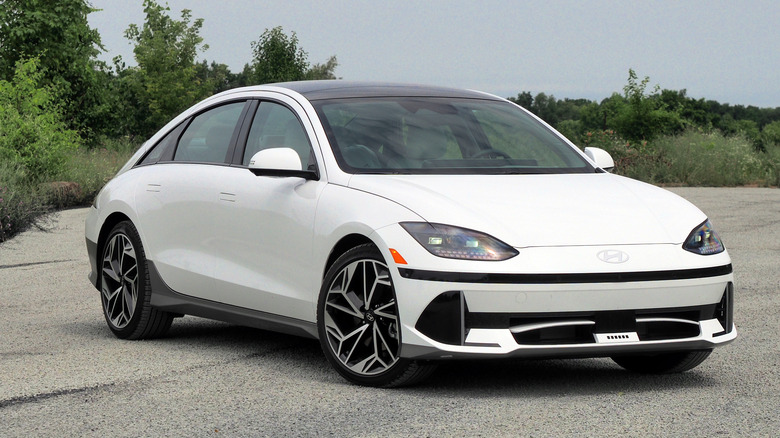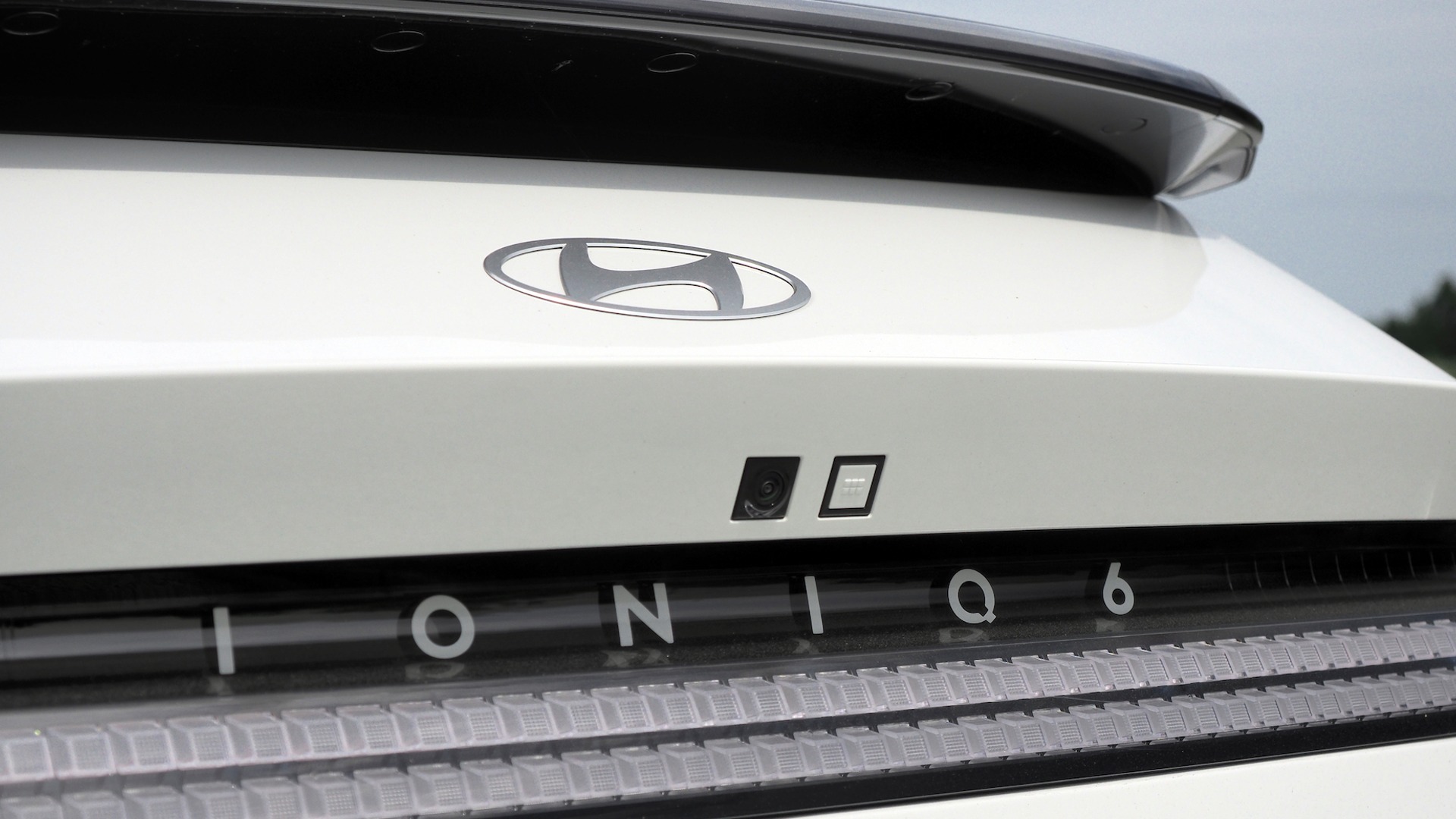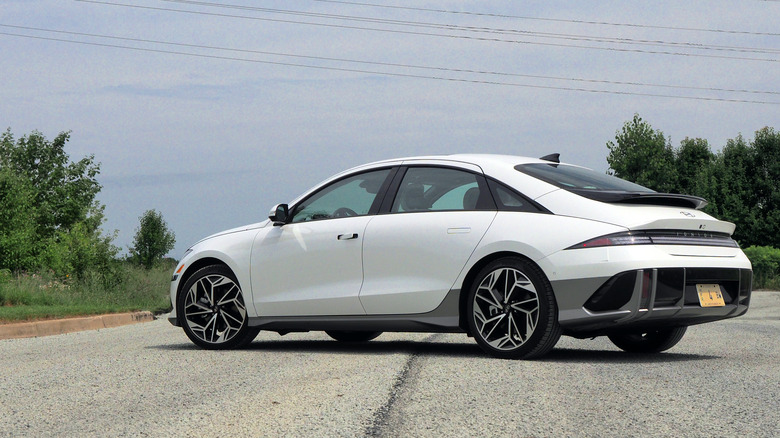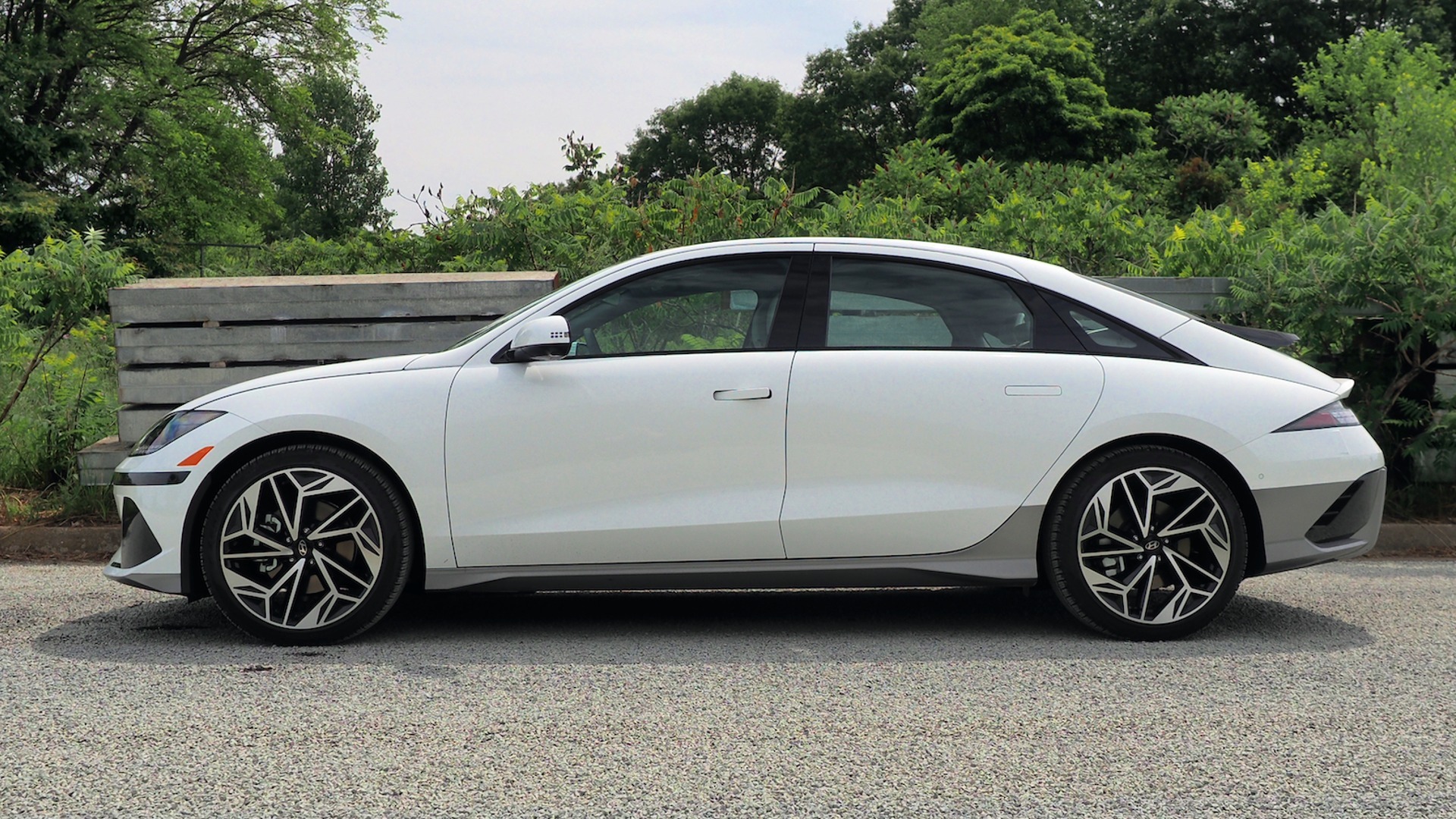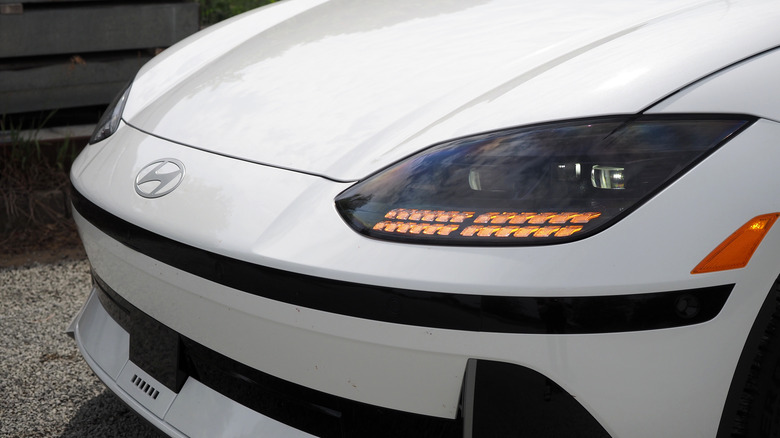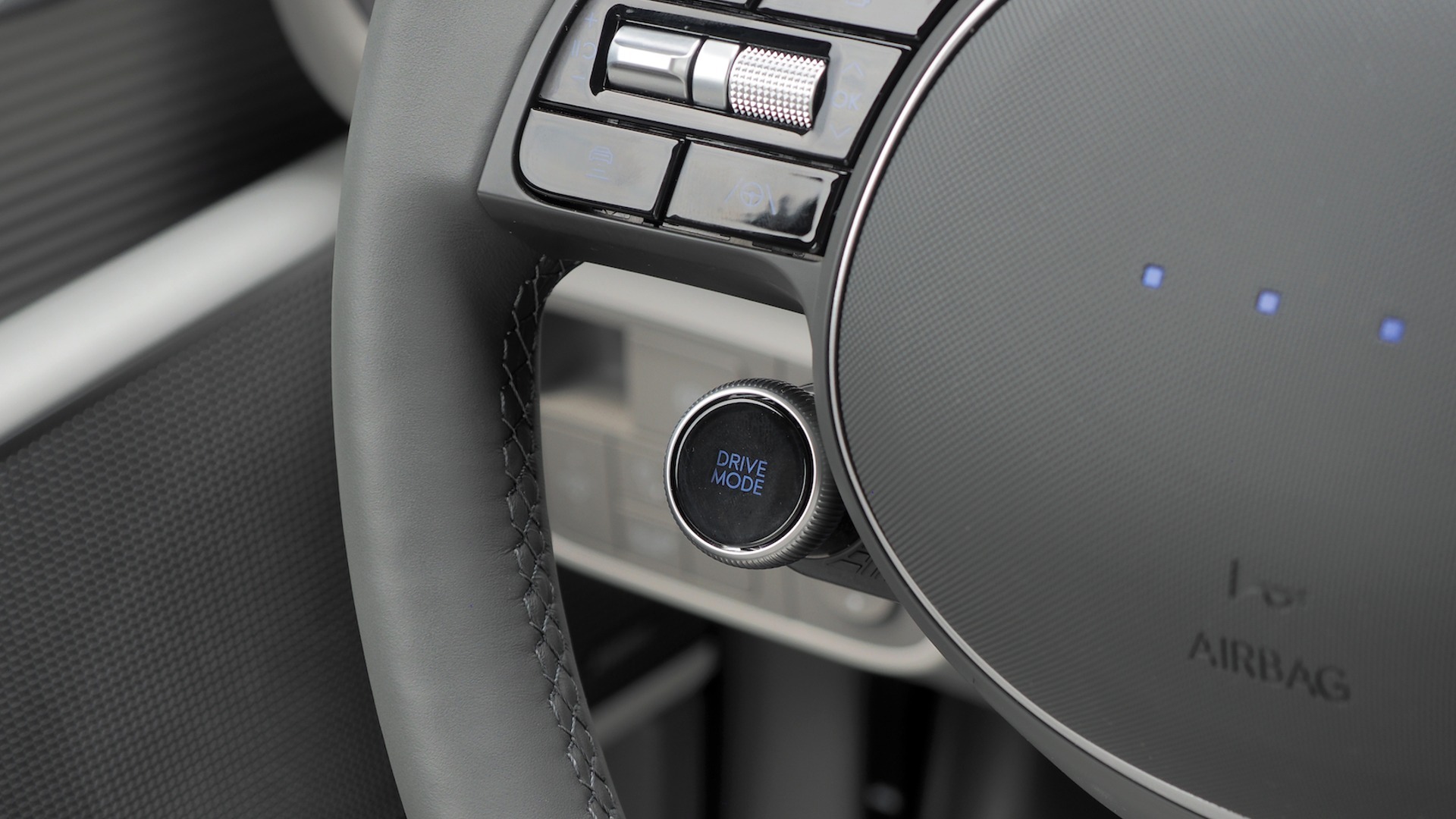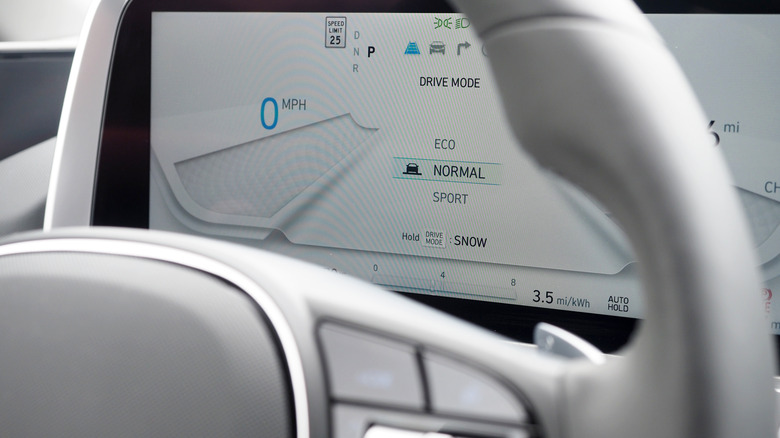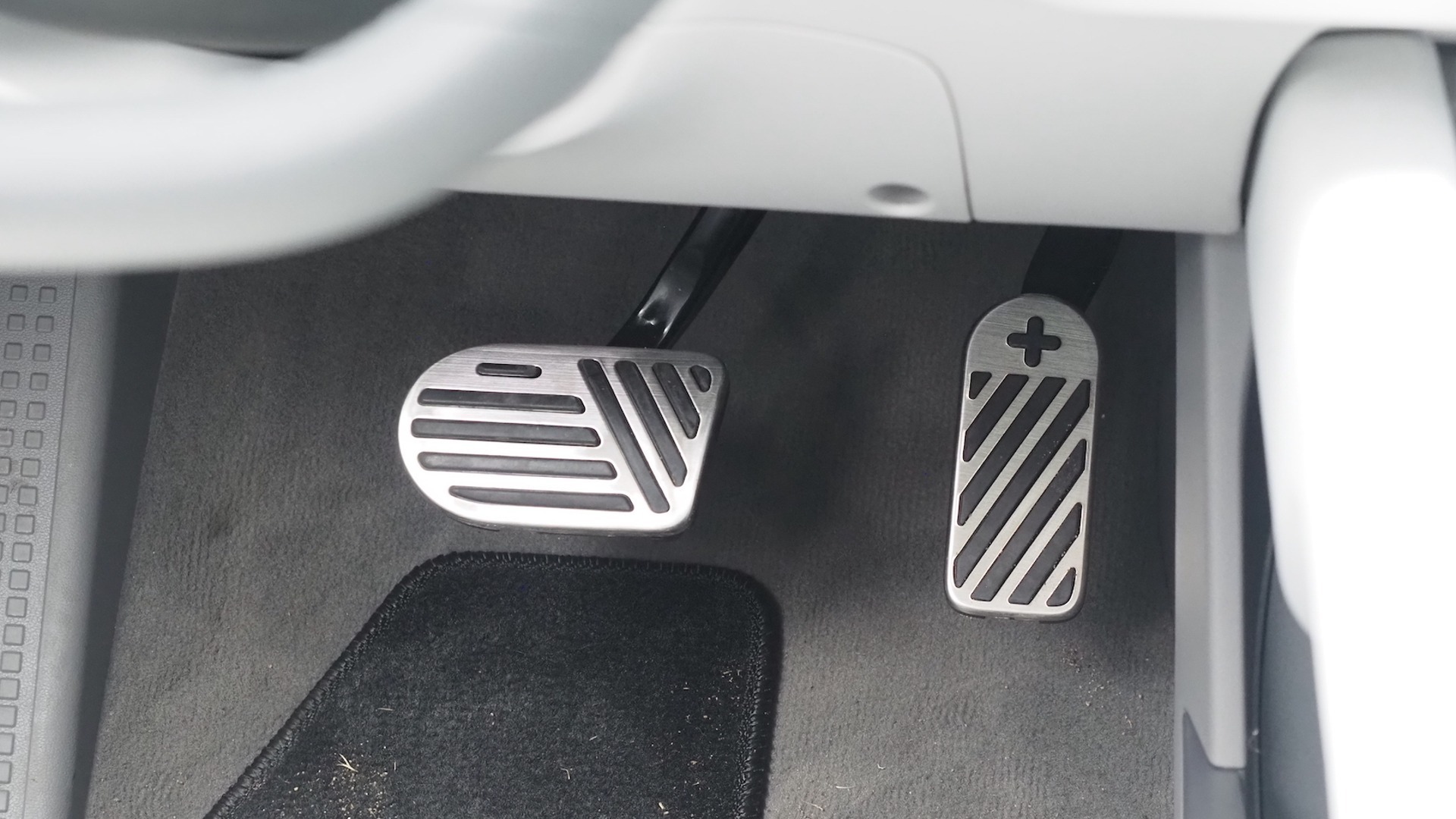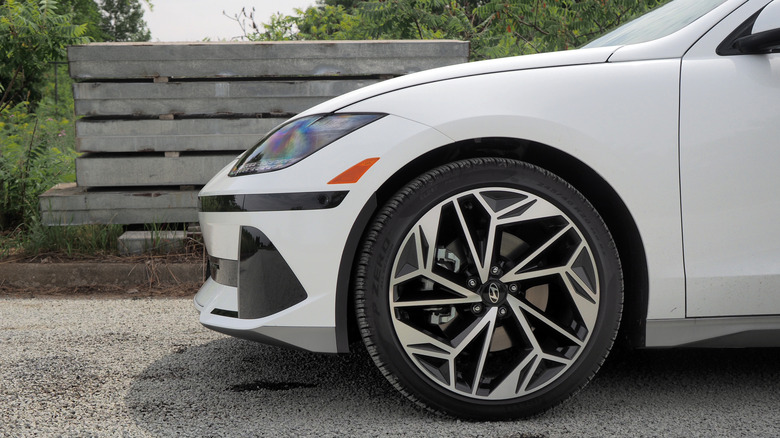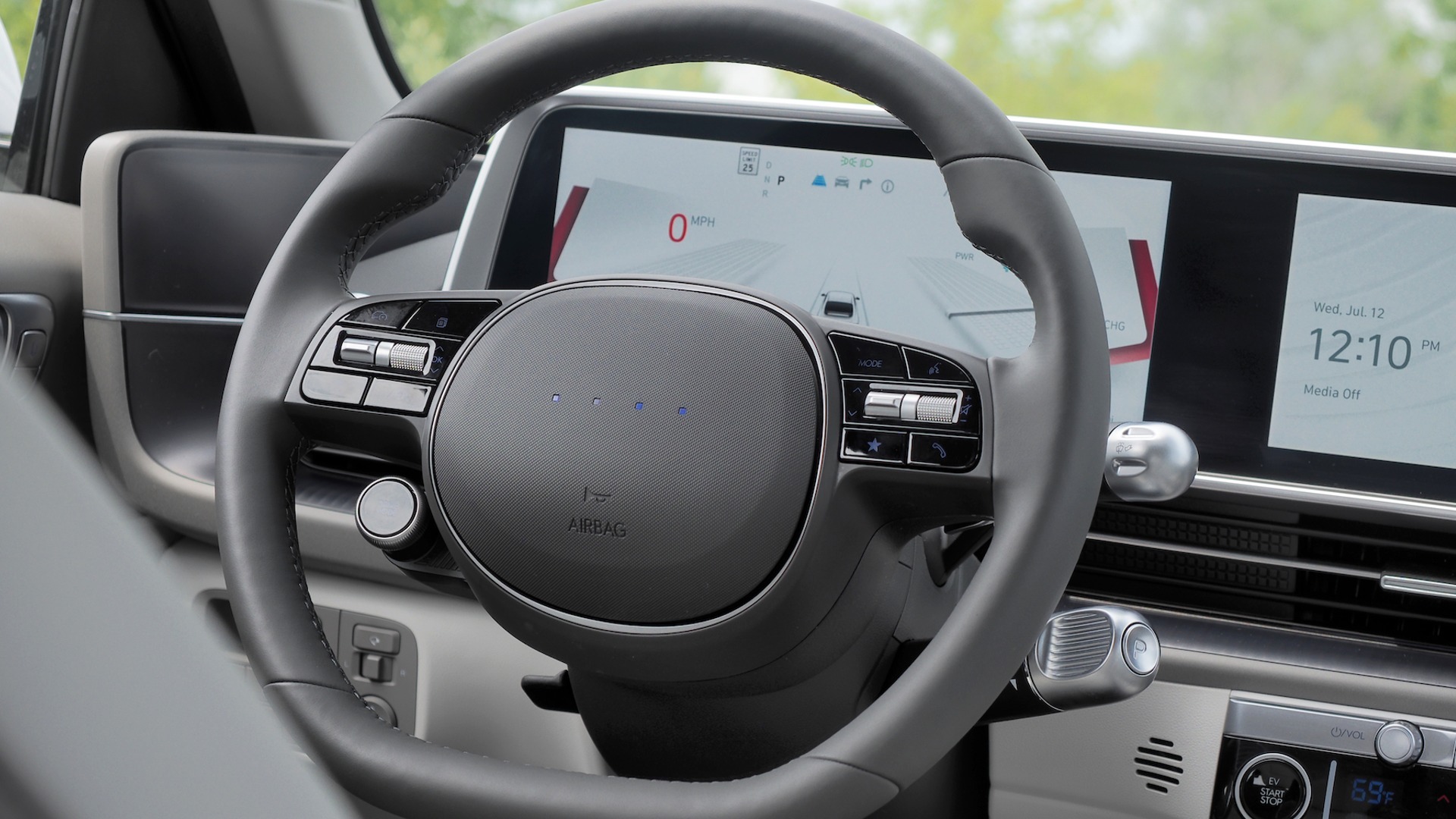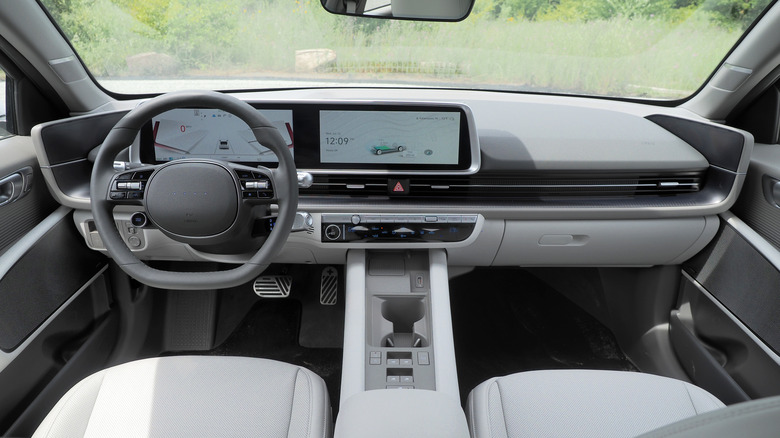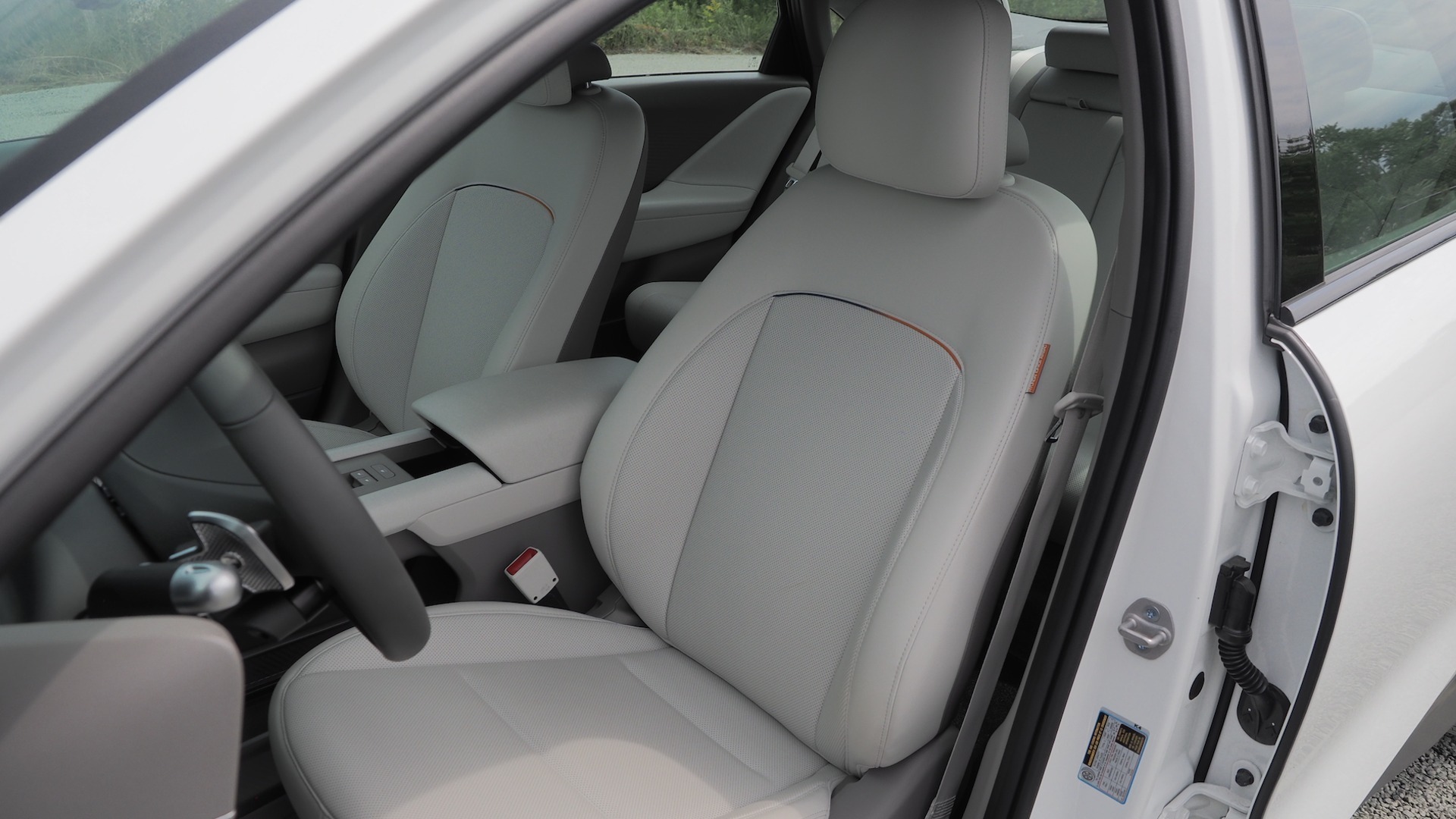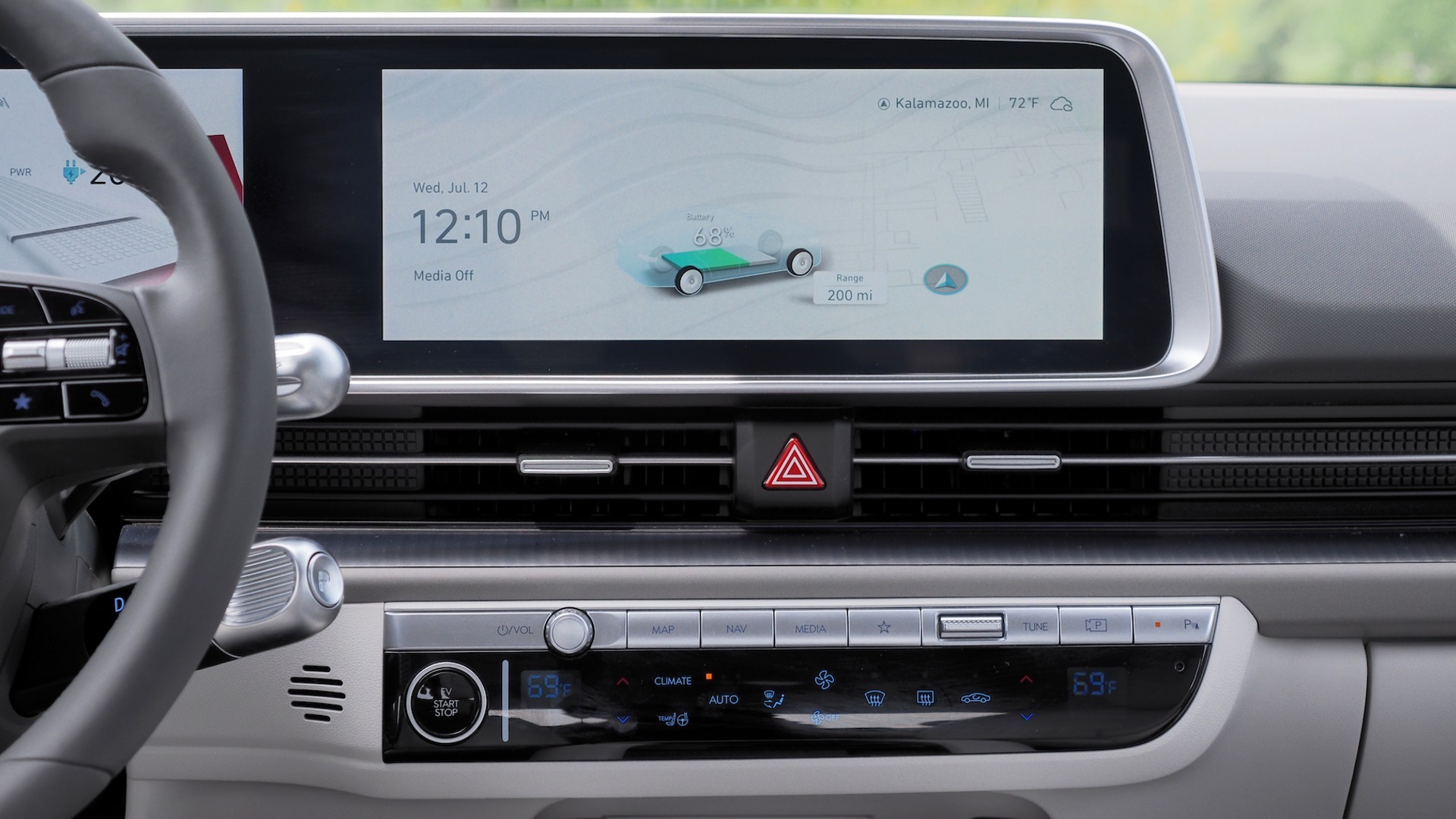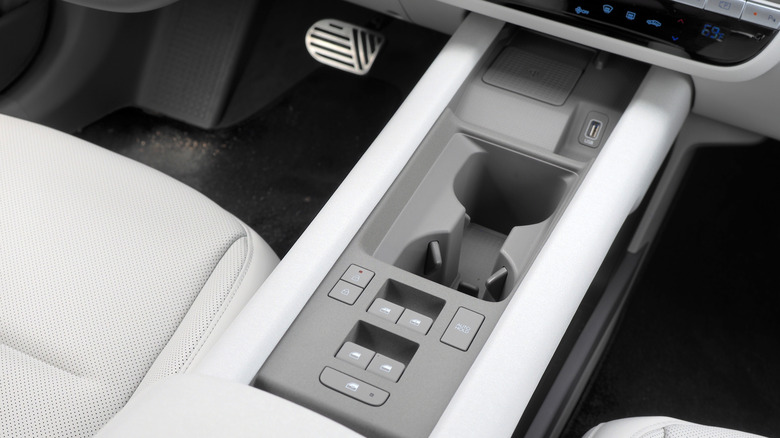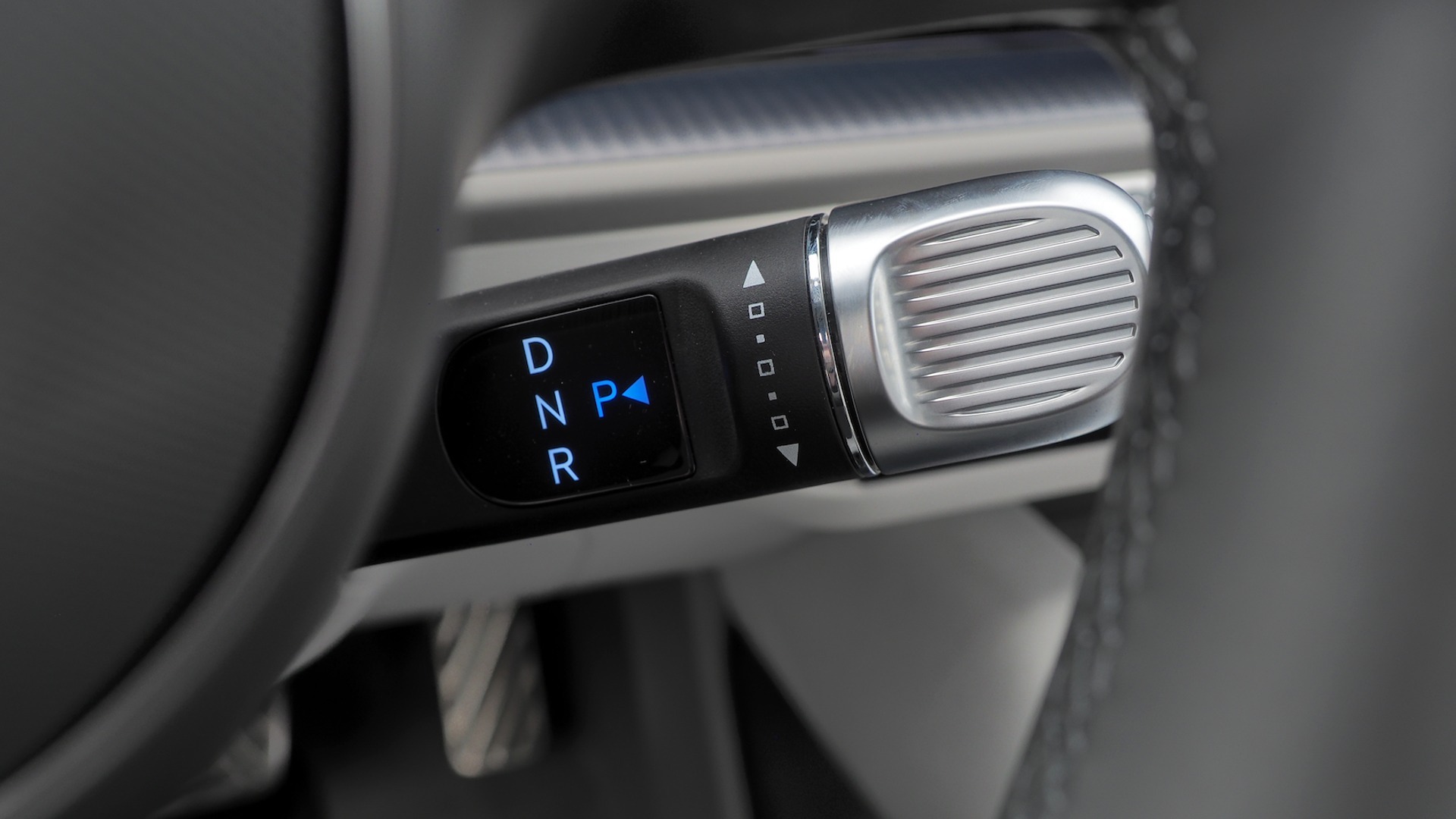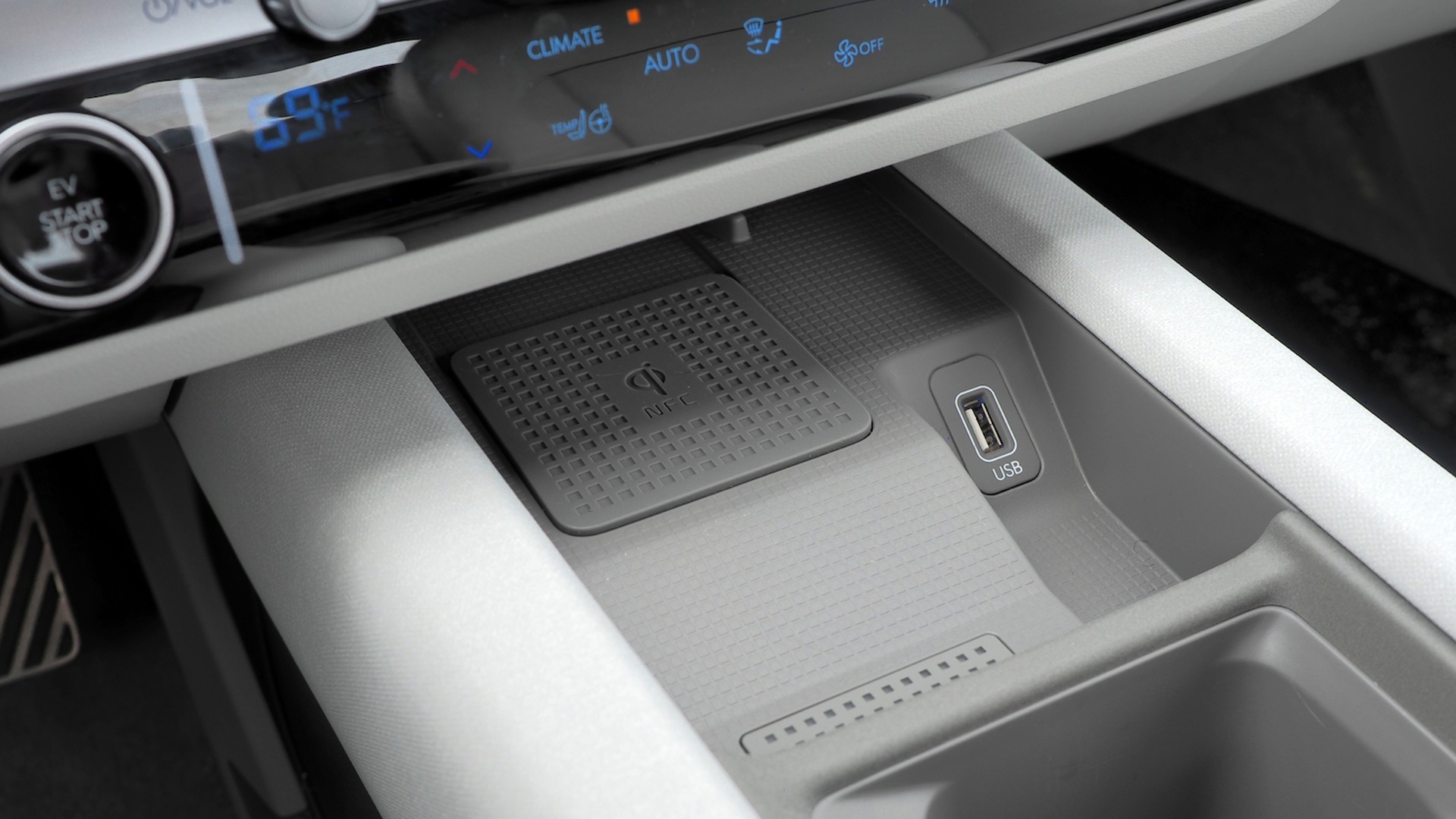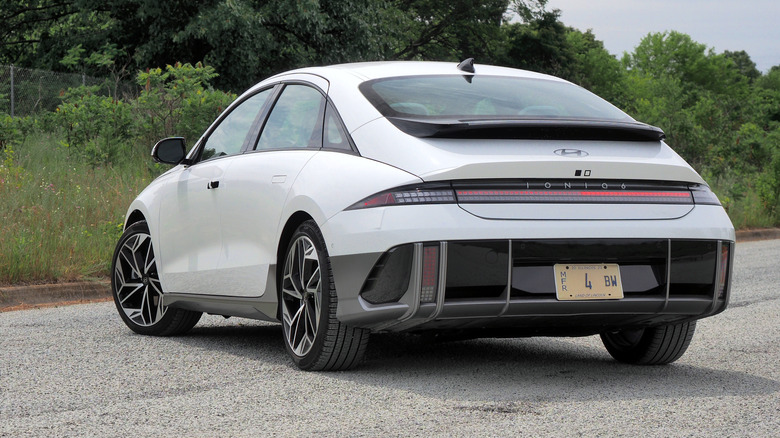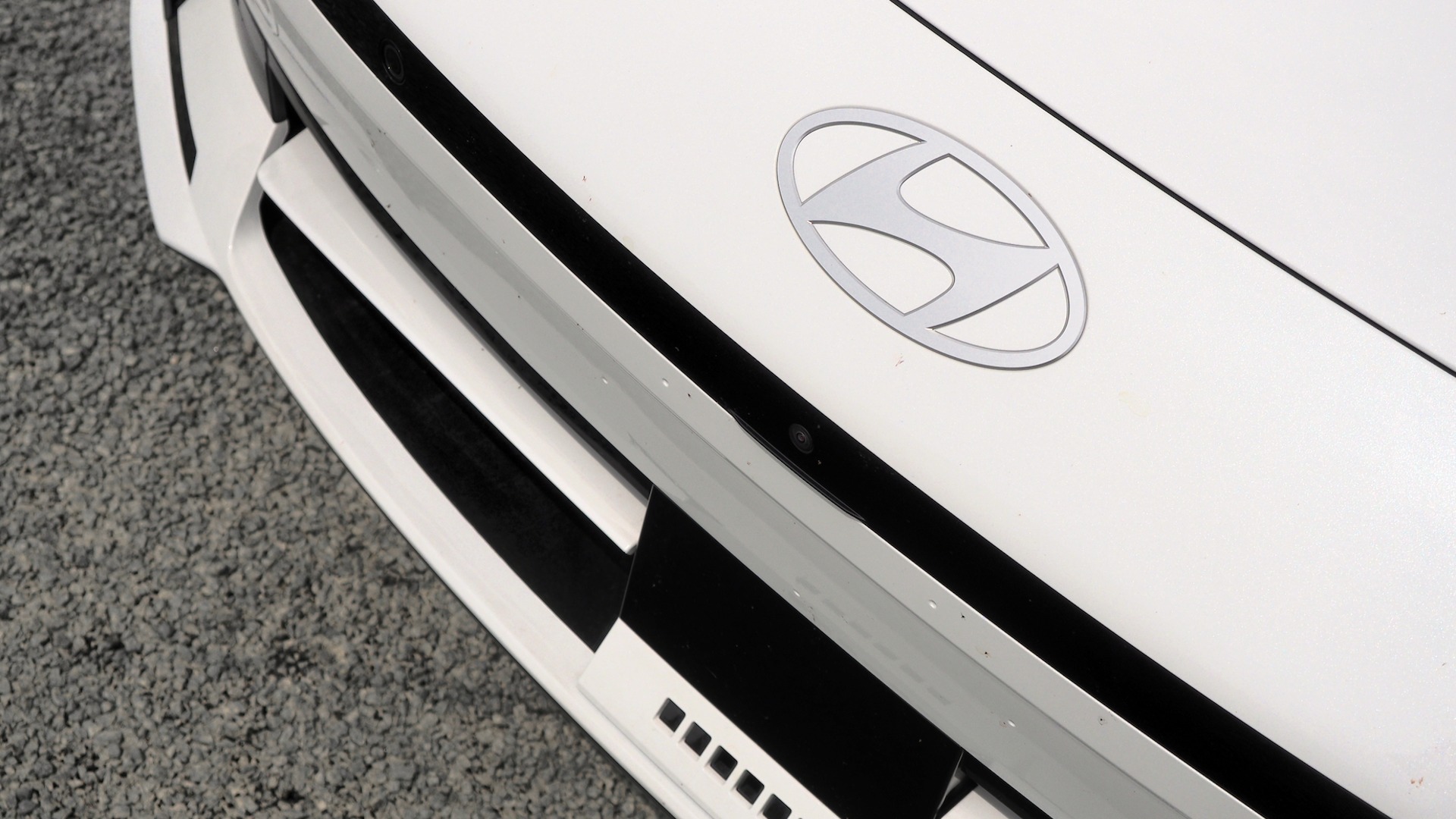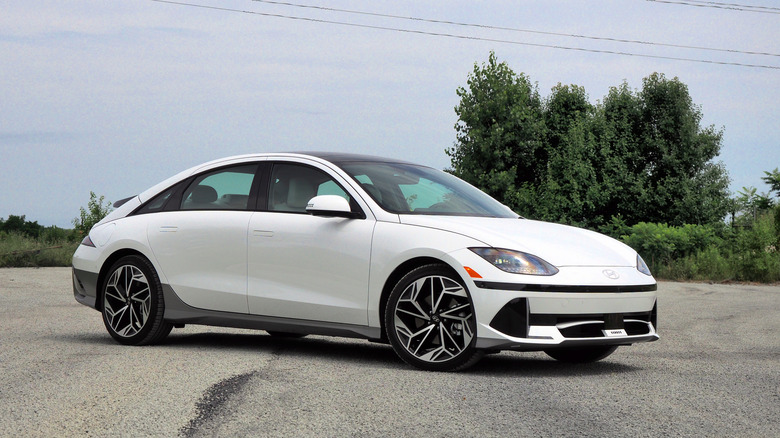2023 Hyundai Ioniq 6 Review: Style With Substance
- Head-turning style looks like nothing else on the road
- Smooth ride and refined EV powertrain
- Decent range
- Well-equipped for the price
- Rivals are faster and sportier to drive
- Rear headroom isn't great
- Still no wireless smartphone projection
There was a fear, back when electric cars first began to hit the market, that the shift away from internal combustion would inevitably lead to boring vehicles. EVs, the pessimistic predicted, were dull and soulless. Too focused on eco-piety and anonymizing aerodynamics to have charm, and character, and distinctive styling. The Hyundai Ioniq 6 seems like a fitting rejoinder.
Electrification hasn't turned out to be boring, of course. EVs can be faster and accelerate more aggressively than their gas counterparts; they can be smoother on the road and generally more refined. Even the concern that an electric driving experience would feel the same, regardless of make or model, has been upended: an electron may be an electron, yes, but how it's harnessed varies dramatically across the industry.
EVs like the Rolls-Royce Spectre obviously have plenty of personality. Starting in the low-$40k ballpark, though, the 2023 Ioniq 6 demonstrates that you needn't spend half a million dollars to get something memorable.
So the Prophecy foretold
The Ioniq 6 owes its curvaceous aesthetic to the Hyundai Prophecy concept of early 2020, which the automaker described as "Sensuous Sportiness" meets "Optimistic Futurism." Beyond the design-speak was an EV both aerodynamically slippery and undeniably striking, a glinting black bubble rich in reflections and studded with crisp pixelated lamp clusters. It looked like the sort of electric car Bruce Wayne would drive to places where the Batmobile wouldn't be considered classy enough.
As we've seen before, the path from concept to production involves compromise. That the Prophecy's pillar-less coach doors and joystick controls didn't make it to the dealership isn't much of a surprise. Maybe the Serenity White of this particular review car emphasizes it, though, but the Ioniq 6 looks a lot more fussy than the concept car did. The more conservative taper to its roofline, presumably to ensure sufficient rear headroom — even then, it's going to be snug for taller passengers — adds heft that the sinuous Prophecy avoided.
There's no denying that it's still a head-turner — I was waylaid in a parking lot by one particularly startled gentleman, who proved reluctant to believe that anything so outlandish could be a Hyundai — and it certainly won't be mistaken for anything else on the road. All the same, I do wonder just how well the Ioniq 6 will age as time takes us from its shocking debut.
Familiar platform with another new twist
For now, though, it's another example of Hyundai being willing to experiment in ways rivals seem loathe to explore. There's no denying, too, that the Ioniq 6 packs its curves with plenty of cutting-edge tech.
There are four trims — SE Standard Range, kicking things off at $41,600 plus $1,115 destination, then SE, SEL, and finally Limited from $52,600 plus destination — with a choice of both rear-wheel drive and all-wheel drive configurations. Expect to pay $3,500 to add the second motor. The SE Standard Range gets a smaller, 53 kWh battery EPA-rated for 240 miles, and a less potent rear motor, at 149 horsepower and 258 lb-ft of torque. AWD isn't offered on the cheapest Ioniq 6.
The SE, SEL, and Limited trims get a 77.4 kWh battery. On the SE, that's good for 361 miles in RWD form and 316 miles in AWD. On the SEL and Limited, those numbers dip to 305 miles and 270 miles, respectively. A more powerful rear motor delivers 225 hp and 258 lb-ft of torque. In all-wheel drive configuration, total power output rises to 320 hp and 446 lb-ft.
Solid, predictable range
As we've seen from other recent Hyundai Group EVs, power management and charging performance are particular strengths. With a 350 kW DC fast charger, the Ioniq 6's 800V architecture supports charging up to 80% in just 18 minutes. Figure on 5.5 to 7 hours for the same 80% on a Level 2 home charger.
On the road, Hyundai's 270 mile range estimate for this Ioniq 6 Limited AWD looks to be spot on. In my own mixed driving — which combined highway, urban, and back road use across Eco, Normal, and Sport modes — the EV's meter claimed a healthy 3.5 miles per kWh. Had I coddled it just a little more, I suspect I could've squeezed even more efficiency out.
While 270 miles certainly isn't the most range you'll find on the market right now, 270 miles of predictable range is worth crowing about. Hyundai's five levels of regenerative braking are notable, too: controlled by the steering wheel paddles, they go from zero-regen coasting through to a fairly aggressive one-pedal mode. Unfortunately, you can't set-and-forget that maximum: the Ioniq 6 will always default to the slightly-lower Level 3 when restarted.
Not so much sporty as smooth
It's worth playing with the settings to suit the road, of course, and the Ioniq 6 makes for a pleasant pal to experiment with. There's not the outright speed that, say, a Tesla Model 3 Performance brings, and Hyundai's suspension and damper tuning is definitely less stiff than what you'll find a Polestar 2 with the Performance Pack. Then again, it means the Ioniq 6 is smooth and refined even on lesser-quality roads.
Not every EV needs to be a rocket, and even if the Ioniq 6 won't rearrange your facial features when you bury the accelerator, it's still more than swift enough to leave ICE drivers lollygagging at the lights. It's impressively quiet, too, and generally very uncomplicated to drive. The more potent AWD configuration easily has enough grunt to whiz through both urban and highway traffic without concern, and while you may not be shocking passengers with sudden acceleration, maybe that's not such a bad thing for a car in this segment.
Sport mode unlocks maximum power and makes the accelerator more eager. Still, the Ioniq 6's steering feels strongly assisted and somewhat remote from the road, and there's little to encourage aggressive cornering from the suspension. We can probably credit the low center of gravity that comes with a sedan — plus the low-slung battery pack that still manages to leave the cabin floor flat — for the bulk of the Hyundai's poise in the bends.
A retro-futuristic cabin
The Ioniq 6's cabin is a curious place. It feels like a '70s TV sci-fi vision of the future, with its soft-shades-of-gray palette and smooth curves. Hyundai's pixel patterning continues here, too, illuminated across the steering wheel and stippled into the center console trim. Overall, there are a lot of textures — and a lot of plastics, many of which are recycled, and many of which are hard to the touch — but somehow it works, at least today.
Injected into all this is Hyundai's familiar technology: twin 12.3-inch displays, one for the driver's instrumentation and the other a touchscreen for the infotainment. There's wired Android Auto and Apple CarPlay, SiriusXM, a Bose audio system, Hyundai's BlueLink remote app support, and a digital key. Limited trim gets a power outlet in the back row, and there are plenty of USB ports, a 360-degree camera, and dual-zone climate control.
The UI is brighter than Hyundai's usual dark theme and gets custom EV graphics for things like range, but generally things won't be too outlandish if you've been inside a recent model from the automaker's group. It's easy to navigate, and I like how straightforward the Ioniq 6 makes it to customize the steering wheel controls. That makes up for there being quite a few of them.
Some control confusion
Hyundai doesn't follow Volkswagen and Volvo's lead in doing away with dedicated rear window controls for those in the front, but it does position that cluster of buttons in the Ioniq 6's center console rather than on the doors as you might expect. In fact, the door trim is markedly bare: the driver gets two seat memory shortcuts, but that's it.
Controlling the heated and ventilated front seats — heating standard across all trims; ventilation saved for the Limited alone — and the heated steering wheel requires dipping into the climate menu in the infotainment (there is, at least, a shortcut button on the HVAC control strip to jump you there). Buttons to adjust the side mirrors are hidden down to the left of the steering wheel. Continuing the EV theme of making the drive selector as odd as possible, the Ioniq 6's is a twisting stalk behind the wheel. It feels like a chunky pregnancy test.
Running down the side of the key fob — on Limited trim cars, anyway — are the buttons for Hyundai's Remote Smart Parking Assist 2. Hold one down (after using remote start to power the EV up) and the Ioniq 6 will trundle forward or backward, in or out of a tight parking space.
Plenty of active safety tech
The remote parking still feels a little gimmicky, but the Ioniq 6's safety tech package is comprehensive. Blind spot warnings, rear cross-traffic collision-avoidance assist, front and rear parking sensors, front collision-avoidance assistance with car, pedestrian, and cyclist detection, lane-keep and lane-follow assist, safe exit and driver attention warning, and Highway Driving Assist I (HDA I) are all standard.
Higher trims get things like parking collision avoidance assistance, junction turning assistance for forward collision-avoidance, cameras that beam a view of the adjacent lane to the dashboard display when you click the turn signal, and blind spot collision avoidance assistance. SEL and Limited trims get Highway Driving Assist II (HDA II), along with machine learning for the adaptive cruise control that promises to make its reactions more human-like.
As for cargo space, there's 11.2 cu-ft with the rear seats up, plus a further 0.5 cu-ft in the diminutive front trunk. Obviously, that's less than an Ioniq 5 — the hatchback trunk of which holds 27.2 cu-ft with all seats up, and it has a bigger frunk, too — but then again it's in line with what you'd expect from a sedan.
2023 Hyundai Ioniq 6 Verdict
Without wanting to diminish the successes of the Ioniq 6 specifically, the bigger achievements here feel more centered around Hyundai's E-GMP which underpins it. Few automakers are doing quite so much with a single electric platform as Hyundai-Kia-Genesis has coaxed from its EV architecture, from the EV6 and Ioniq 5, through the GV60 and the upcoming EV9.
This means that if you're not entirely convinced by the Ioniq 6's styling, you can get much the same polished experience from any of the automakers' other EVs. That feels reassuringly straightforward. At the same time, there's plenty to like about the Ioniq 6's package overall, especially if you stick to more affordable trims like the long range SE or SEL.
Has Hyundai bested the Tesla Model 3? On paper, no, but as we've seen with other EVs, there's more to the overall experience of going electric than just price, range, and straight line speed. I prefer the Hyundai's cabin on both design and space, and while the Ioniq 6 may not match the blistering performance of Tesla's most potent versions, it feels more mature and luxurious.
Meanwhile, the polarizing design and Hyundai's decision to only offer the car in select U.S. states should help keep the Ioniq 6 a relatively rarity on the road. Given it can be hard to go a few minutes without seeing a Model 3 drive past, I figure more than a few potential EV drivers will find that exclusivity appealing. The fact that they're also getting a smooth, capable, and gadget-packed EV in the process only sweetens that deal.
